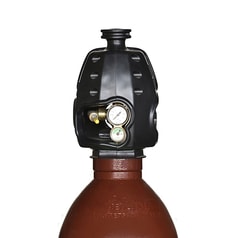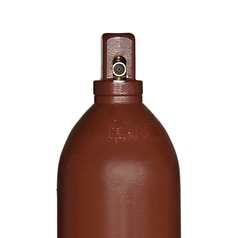Pour bénéficier d’un affichage optimal de la boutique en ligne de PanGas, vous avez besoin pour le navigateur de la version minimale suivante:
• Internet Explorer 9.0
• Mozilla Firefox 38
• Safari 8
• Chrome 45
Veuillez vous assurer que JavaScript est activé dans les paramètres de votre navigateur.
Acetylene
Production of acetylene gas consists of the reaction between calcium carbide and water
Acetylene is a synthetic gas produced from the reaction between calcium carbide and water, and this at various sites near our customers. The process helps to preserve the environment, as acetylene gas is a by-product of the petrochemical industry.
Safety information
What is acetylene?
Acetylene, also known as ethyn, is a colorless, highly flammable gas. Because it is a colorless gas, it cannot be seen by humans, but because of its distinctive, garlicky, sweet smell, Actylene can still be perceived by humans. It is intoxicating, but not poisonous. Acetylene forms explosive compounds (acetylides) with silver and copper, among others; therefore, only metal alloys with up to 63% copper are allowed for equipment
How is acetylene used?
Acetylene is mainly used for oxyfuel welding and cutting. It is in fact the only gas with which gas welding can be done. In gas welding, two metal parts are united under the action of heat to one whole. The heat is obtained through the combustion of acetylene with oxygen. This creates a weld pool which, with or without the aid of an additive, forms a connection between the two metal parts. In oxyfuel cutting, the workpiece to be cut is brought to ignition temperature by means of a preheat flame, after which the centrally added cutting oxygen starts and maintains the oxidation process. The discharge velocity of the cutting oxygen jet blows the resulting slag out of the cutting joint. Oxy-fuel cutting is only possible for materials where the slag generated has a lower melting temperature than the material itself.
Why are cylinders for acetylene different from those for other gases?
The acetylene cylinder is an exception to other gas cylinders because it is completely filled with a porous mass, into which acetone has been sucked. This porous mass ensures a permanent distribution of the acetone throughout the contents. The reason for this is that at pressures above about 2 bar, without the presence of air or oxygen, acetylene can disintegrate into its elements, carbon and hydrogen, under explosive conditions at a sufficiently strong ignition source; this is called dissociation. When acetylene is dissolved in acetone and finely distributed throughout the porous mass, a safe filling pressure of 15 bar at 15°C can be maintained. Depending on the temperature, the gas pressure can vary by about 0.3 bar/°C.




